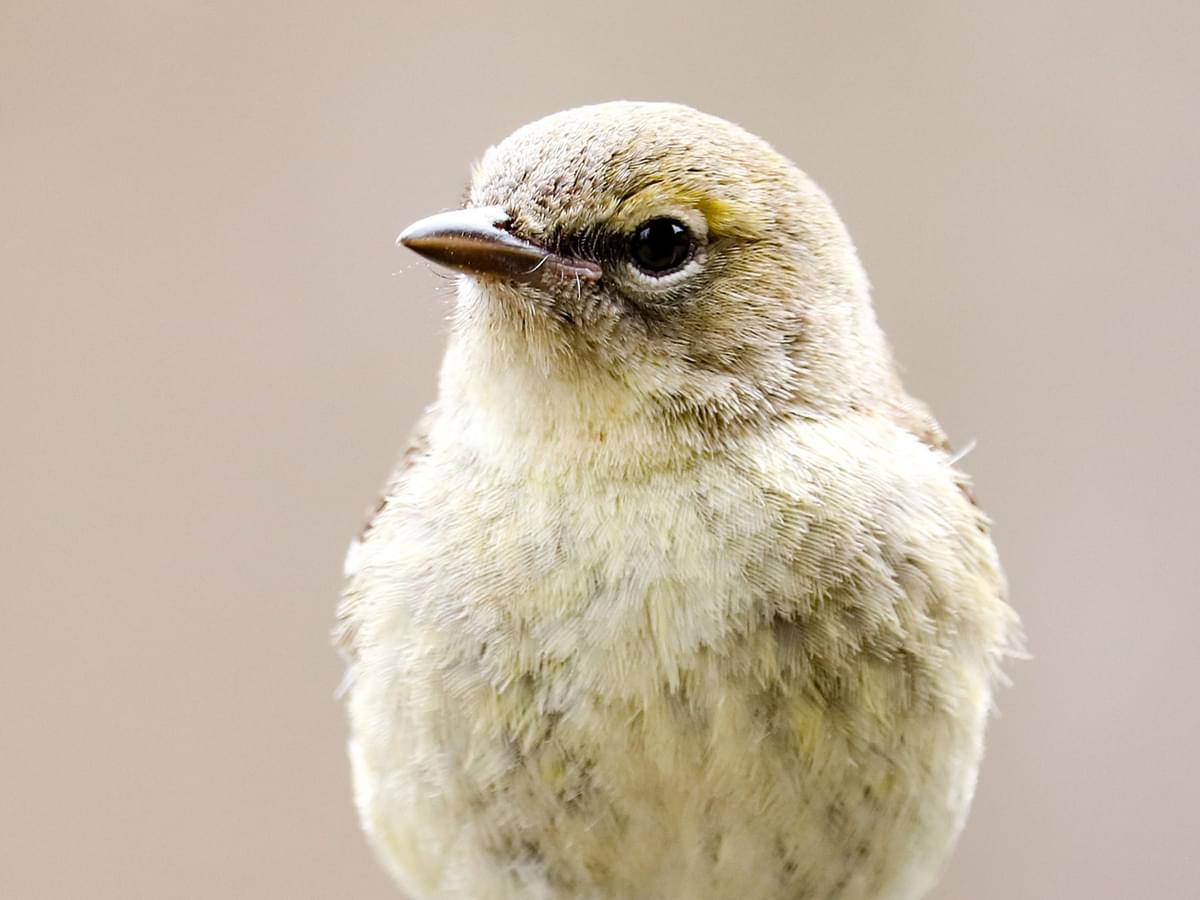Female Pine Warblers (Male vs Female Identification)
Last updated: 6 February 2023

The pine warbler is a native songbird to the eastern United States and southeastern Canada. They are so named due to their apparent preference for pine forests, where mated pairs nearly always nest in pine trees.
The female pine warbler is easily distinguishable from the male because her plumage is much more subdued. Males are bright yellow, whereas females are grayer overall.
The two sexes are also discernible by their behavioral differences, particularly in calling and nesting behaviors. We will discuss these topics in more detail throughout the article. Read on to discover more about what sets the female pine warbler apart!

Close up of a female Pine Warbler
How can you tell if a Pine Warbler is male or female?
Male and female pine warblers are sexually dimorphic, making the two fairly easy to tell apart. Males are much brighter than females, with vibrant yellow plumage trimmed in gray and white. Females, on the other hand, are more subdued; their plumage is more brown than yellow.

Female Pine Warbler

Male Pine Warbler
What does a female Pine Warbler look like?
The adult female pine warbler is brownish-gray overall. Unlike the male, she has little to no yellow or olive color on her upper- and underparts.
The female’s crown, head, neck, back, and rump are typically gray to gray-brown, while her underparts and flanks are buffy white. The wings and tail are gray or washed brown with white wing bars. Occasionally females boast a faint yellow tint on the breast.
Juvenile females closely resemble adults. However, young pine warblers are noticeably duller.

Adult female Pine Warbler perched by the side of a pond, Florida
Size difference
Female pine warblers are similar in size to males. The two sexes are practically identical in size, with mass ranges falling between 9.4 and 15.1 grams.
Calls and Singing
Pine warblers have a varied vocal array that both sexes utilize. The primary difference between male and female call behavior is that only the male is known to sing the primary song. Primary song, of course, is a musical vocalization that males use to establish territory and attract a mate.
It is suspected that females sing on rare occasions since this is a known behavior amongst other female warblers. That said, female pine warbler song has never been recorded.
The female pine warbler does utilize other vocalizations, such as the alarm call - cheet. They also have a sharp, lower-pitched call used for short durations during social interactions.

Female left, and male right, Pine Warbler pair perched on a log
Nesting and Feeding
Male and female pine warblers take on different responsibilities during nesting and feeding. The female is the primary nest builder. Males rarely gather material but will accompany the female, often singing as she gathers nesting supplies.
Once the final egg is laid, the female begins incubating. Male pine warblers are not known to incubate, but they do frequently bring the female food while she is on the nest. After the young hatch, the brooding period follows, in which both parents share responsibilities.
One mate will forage while the other remains with the nest, brooding the chicks. Then, once the brooding period is over, both parents share the responsibility of feeding their young.

Breeding pair of Pine Warblers perched in a tree - male (left), female (right)
Similar birds to female Pine Warblers
There are a couple of other warbler species that look similar to the female pine warbler, including the baybreasted and blackpoll warblers. The best way to distinguish the pine warbler from these species is its lack of streaked underparts.
A pine warbler's belly is usually buffy white with no markings, while both the baybreasted and blackpoll boast dark streaking on their bellies.
The juvenile pine warbler also has a look-a-like. They can be confused with yellow-rumped warblers. However, pine warblers lack yellow patches on their rump and the sides of their breast. They also have less streaking overall.

Male and female Pine Warblers are easy to tell apart, as males have a bright yellow plumage
FAQs
Can female Pine Warblers raise young alone?
The female pine warbler is unlikely to raise young alone. She is dependent on her mate to bring her food during the incubation period. Then, once the chicks hatch, the mated pair share brooding and feeding responsibilities.
If the female were left to do this on her own, it would put a lot of strain on her and leave the nest frequently vulnerable. A female pine warbler would have the best chance at raising young alone after the brooding period when the nestlings are slightly less at risk.
What color are female Pine Warblers?
Female pine warblers are primarily a grayish-brown color overall. Occasionally females have light yellow patches on their chest, but not nearly as bright as the yellow plumage on males.
Do female Pine Warblers call?
The vocal array of the female pine warbler is not extensive, but they do call. Females utilize a couple of different alarm calls, one of which is described as tseet or cheet. They also have a contact call, vocalized as zhee or zeet, and a short duration, low-pitched call often heard in social contexts.
Do female Pine Warblers sing?
Singing from female pine warblers has never been recorded. However, it is suspected that females of this species may sing rarely, as other females in the warbler family are known to sing on occasion.
Are female Pine Warblers territorial?
Female pine warblers are not territorial in the same way males are. They do not frequently fight, ward off competitors, or show a tendency to exert dominance. However, they are protective of their nests and will chase intruders.
